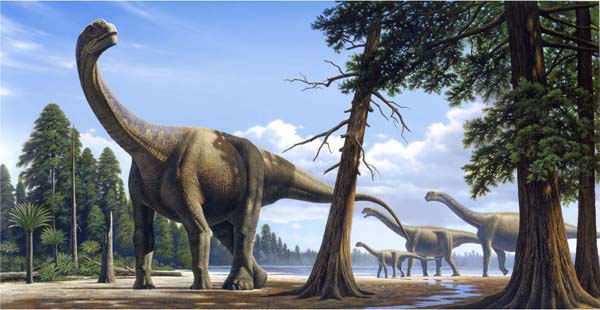
Camarasaurus; Image from Dinopedia
| Sauropodomorpha | ||
| The Vertebrates | Overview |
| Vertebrates Home | Vertebrate | Vertebrate |
|
Abbreviated Dendrogram
Dinosauria
├─Ornithischia
└─┬─Theropoda
│
└─Sauropodomorpha
├─Prosauropoda
└─Sauropoda
├─Cetiosauridae
└─Neosauropoda
├─Diplodocomorpha
│ ├─Rebbachisauridae
│ └─Diplodocidae
└─Macronaria
├─Brachiosauridae
└─Somphospondylii
├─Euhelopodidae
└─Titanosauria
├─Nemegtosauridae
└─Titanosauridae
|
Contents
Index |

Camarasaurus; Image from Dinopedia
The most impressive and characteristic of all the dinosaurs are the sauropods, not only the largest animals to live on land, but alos the most successful and long-lived of any megafauna. In this unit we present a brief overview of these awesome creatures, along with their ancestors, the prosauropoda [1]. Sauropods and prosauropods together make up the Sauropodomorpha, or "sauropod forms", although most sauropodomorphs are actually sauropods proper, the prosauropods being only a group of late Triasisc and Early Jurassic short-lived primitive forms. Although all shared the same large bodied, long necked, small headed form, these spectacular animals nevertheless evolved along a number of distinct evolutionary lineages, reaching their greatest diversity during the late Jurassic. By the late Cretaceous, only the titanosaurs remained, but, rather than being remnant holdovers, these populated every continent and included dwarf forms as well as giants, and even specialised armoured forms MAK120303
Notes
[1] Being paraphyletic, Prosauropoda is an invalid taxon in the cladistic paradigm (but not in evolutionary systematics), being replaced by rather vague and clumsy alternatives such as basal sauropodomorpha. We have however retained the term in both the colloquial and the linnaean sense.
page MAK120303